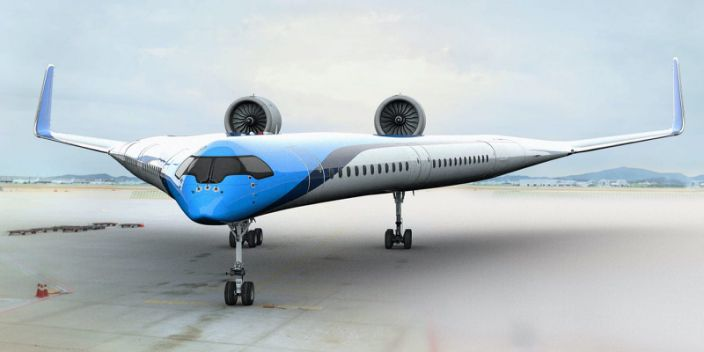
kyrnews.com
A prototype of KLM Royal Dutch Airlines' futuristic-looking flying wing aircraft just took its first flight in Germany – take a look at the Flying-V | KYR News
A rendering of KLM Royal Dutch Airlines’ Flying-V aircraft. KLM Royal Dutch Airlines The first scaled model of KLM Royal Dutch Airlines’ futuristic Flying-V aircraft took flight in Germany last month in an early milestone for the program. The Flying-V is a flying wing aircraft where the fuselage is blended with the wings to create […]
Science & Tech
A rendering of KLM Royal Dutch Airlines’ Flying-V aircraft.
KLM Royal Dutch Airlines
The first scaled model of KLM Royal Dutch Airlines’ futuristic Flying-V aircraft took flight in Germany last month in an early milestone for the program.
The Flying-V is a flying wing aircraft where the fuselage is blended with the wings to create a giant V-shaped plane.
Airlines and aircraft manufacturers are turning to flying wing designs as an environmentally friendly alternative to conventional designs.
Visit Business Insider’s homepage for more stories.
A scaled model of KLM Royal Dutch Airlines’ aircraft of the future just took flight for the first time in a milestone event for the Dutch flag carrier’s push for more efficient and environmentally responsible aircraft.
Engineers got their first look at what might one day by the new flagship of KLM’s fleet in late August when the futuristic-looking Flying-V demonstrator successfully took to the skies above Germany. The remote-controlled flight was the culmination of two-year’s work of engineers from KLM and the Delft University of Technology, also known as TU Delft.
The Flying-V differs from conventional aircraft as the fuselage and wings are merged to form one giant flying wing. New long-range aircraft from Airbus and Boeing focus on efficiency through the use of composites and fuel-efficient engines, but flying wing aircraft take efficiency to the next level with a radically new aerodynamically friendly fuselage design that enables longer ranges and better fuel performance.
Researchers say the design will reduce fuel consumption by 20% from today’s most advanced aircraft such as the Airbus A350 and Boeing 787 Dreamliner, both of which are currently employed by Air France-KLM, parent company to the Dutch carrier and one of the largest airline groups in Europe.
KLM first announced its investment in designing the craft in conjunction with TU Delft in June 2019 at the International Air Transport Association’s annual general meeting in Seoul, South Korea.
























































